by tmoffett | Dec 23, 2010 | Color, Landscape, Photographic Technique
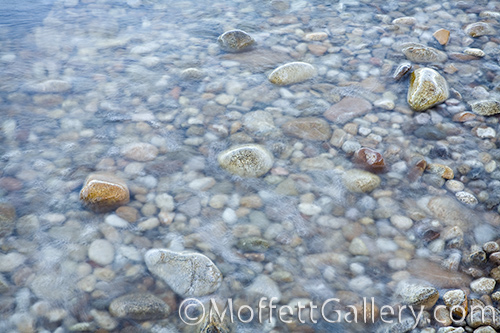
Shoreline, Gotts Point
“How do you capture the motion of water like you do?” That is a question that frequently comes up when I visit with others who are relatively young in the art of photography. It is a question that has a multitude of answers. There is one thing in common with the answers, though. It is all about shutter speed.
The shutter speed is the exposure control that determines how anything in motion is rendered in the final image. If I want to stop the motion, then a very fast shutter speed is necessary, and conversely, if I want to allow the motion to be seen in the still image, a slow shutter speed is needed. How fast or how slow? That is where experience is necessary. It all hinges on how fast the subject is moving and what effect you want portrayed. In the case of this image, with the roughly four inch waves lightly lapping against the rocks near the shore creating bubbles and foam, a .6 second shutter speed was selected so that the bubbles in motion would be evident. Any slower and they would disappear into a blur of motion. Any faster and they appear to be standing still. As is, the lines and streaks are what creates the interest in the image. Take a look at the detail image below.
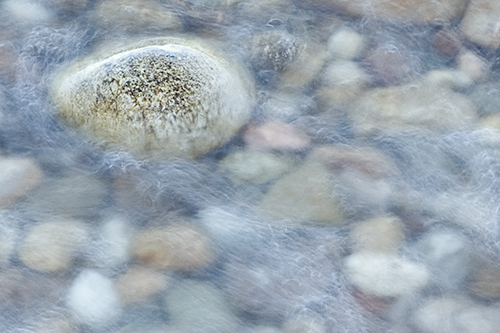
Detail of Shoreline, Gotts Point
Using shutter speed to control motion in photography is something that can only be learned through experience. I have shot thousands of images and analyzed them to get where I am today, and I am still learning and refining my craft. I have learned that motion in a photograph can be used to create mood and feeling. What that mood or feeling is depends on the amount of motion exhibited. The amount of motion shown is completely determined by what shutter speed is selected.
Take control of your image making by taking your camera off of Auto or Program mode, switch to Manual Mode and have fun! Don’t get discouraged by a few mistakes, but analyze them and learn from them. In a short time you will see major improvements in your ability to create more personal meaningful photographs through the use of motion.
by tmoffett | Dec 22, 2010 | Color, Landscape, Ramblings
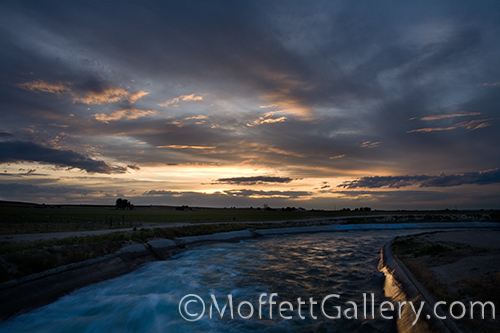
Below the Dam
When looking for locations for portrait photography, I tell my students to find what they like, then turn around and look the other way. Often we miss the best light because we don’t look. I have made a habit of doing this when making landscape photographs as well. Sometimes it pays off.
One evening I was photographing from the lower dam at the lake, looking east as the sun was setting. The warm light skimming the surface of the water and lighting the shoreline on the opposite side of the lake was a wonderful sight. I thought I had what I wanted and began taking down my camera and then heard a voice inside me say, “Turn around!” I did and saw this wonderful sunset. I scrambled to the bottom of the dam and quickly found this spot where I could photograph the irrigation water as it was released into the canal and flowed toward the farmers fields.
Water is the lifeblood in this farming community. Most of my photographs of Lake Lowell are about the quiet beauty of lake and the surrounding area. This one says something more. It speaks of the necessity of the lake to this community. Without it, farmland would dry up. Jobs would be lost. Mouths would go hungry. People would move and the land would become deserted.
I love the lake for its beauty. Others love it for its recreational opportunities. To all of us it is a necessity.
by tmoffett | Dec 21, 2010 | Color, Photographic Philosophy
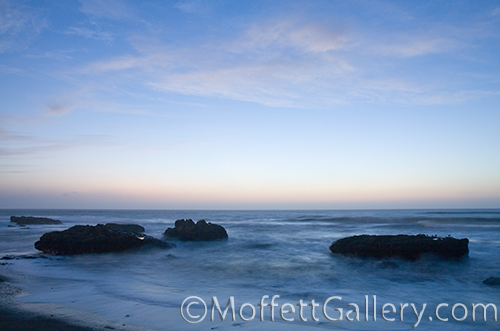
Sunset, Yachats, Oregon
…I keep shooting! I really like the look and feel of landscape photographs made after the sun has set. The long exposure time and the cool light of the evening sky create an interesting feel. It is not the usual colors of the daytime that we are so accustomed to seeing. It is also not something that is easy to photograph. I have had to train my eye to see as the camera sees. Focusing can become an issue as well as it gets dark. Knowing how much to adjust the exposure to brighten the image up just enough to show depth and feeling, but not going too far so as to create a “daylight” kind of look. Then there is the challenge of motion, as the long shutter speeds will record anything that moves as a blur. All of these issues can work together for the good of the image, or just as easily destroy it. Learning to make it work is a challenge that when mastered opens up the door to creativity and self expression in a way unlike any other. It has brought new life and vision to me as a photographic artist.
by tmoffett | Dec 17, 2010 | Color, Ramblings
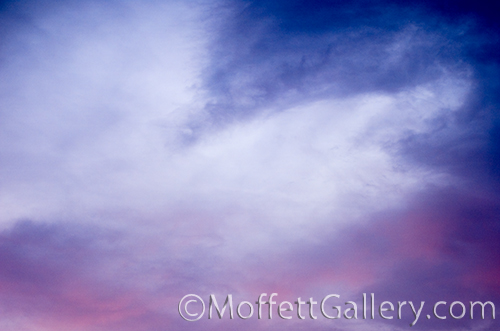
Clouds #14
What is it about clouds that is so interesting? I am not sure, but I always find myself looking at them and never seem to tire of them. When I am shooting a landscape, I am always scrutinizing the sky because it can make or break an image. Other times I will photograph just the clouds. They have so much variety in color and texture. I think I could shoot clouds daily and find fresh photographs every time I shoot. Maybe that should be my next creative self assignment. Photograph the sky daily for one month. It could be interesting!
by tmoffett | Dec 15, 2010 | Color, Ramblings
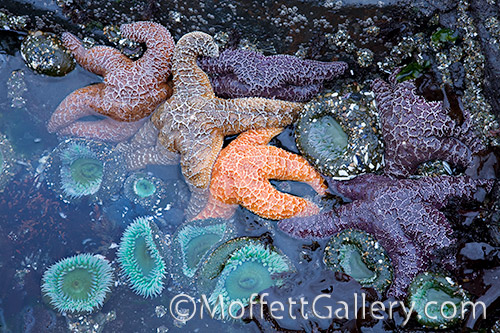
Tide Pool, Yachats, Oregon
Sunrise and low tide. What a great combination! Walking along the coast in Yachats, Oregon at sunrise on a stormy day in October was incredible. For just a few minutes before the tide began rising again, lots of sea life was visible. It really was an incredible sight. With the soft morning light, the colors of the sea came to life as I was able to get right down to the edge of the pools. I don’t get to the ocean often enough, and when I do I never know just what I might find. It is always different, but never disappointing. This particular morning was no different.
While photographing this particular tide pool, I lost track of time and my path back to shore was nearly submersed. Yes, I got a little wet that morning, but it was so worth it. As the tide began rising again, the wave became quite ferocious and began pounding into the rocky shoreline, creating quite a scene and completely submersing the tide pools and the life that filled them. I was back to photographing the power of the sea for the next couple of hours.








Recent Comments